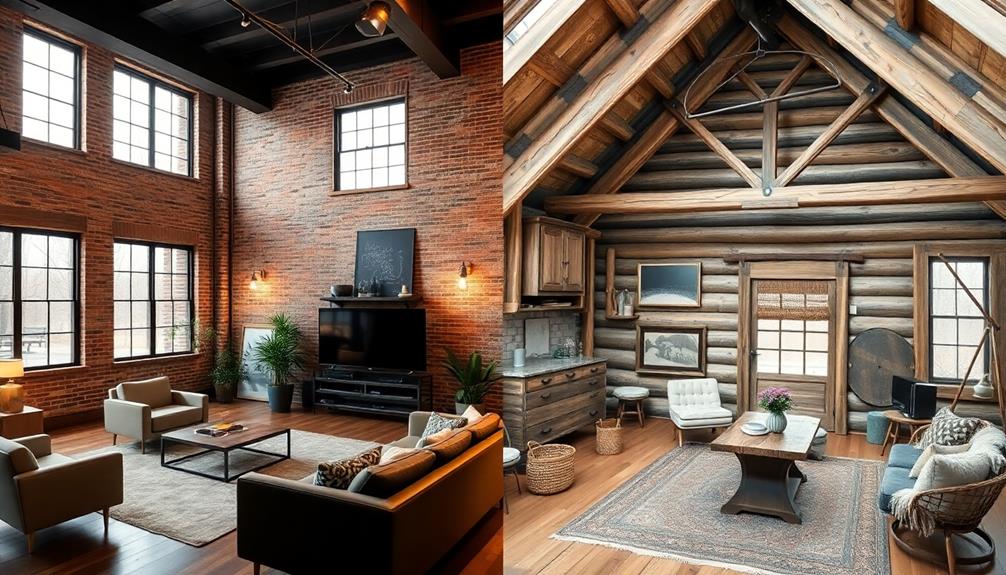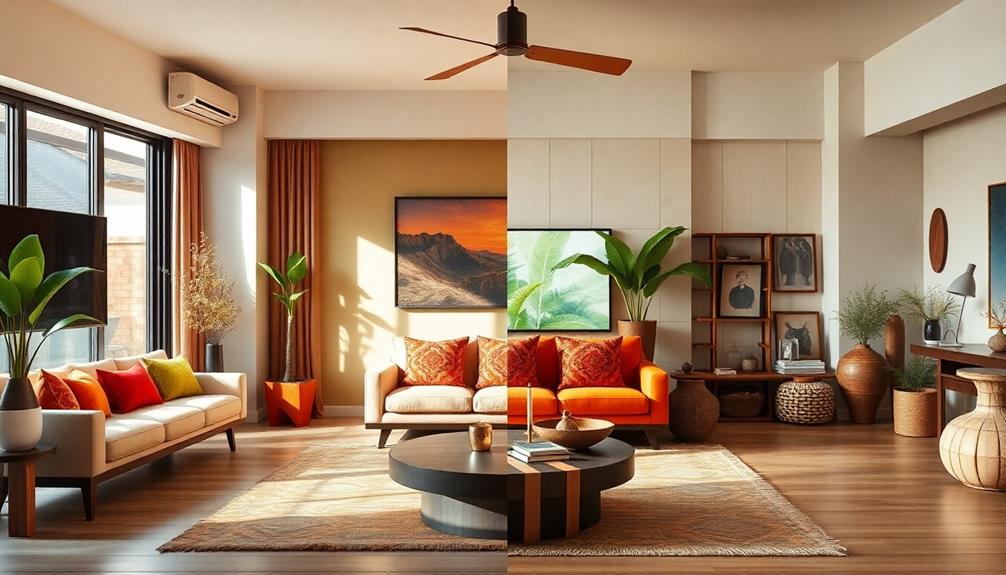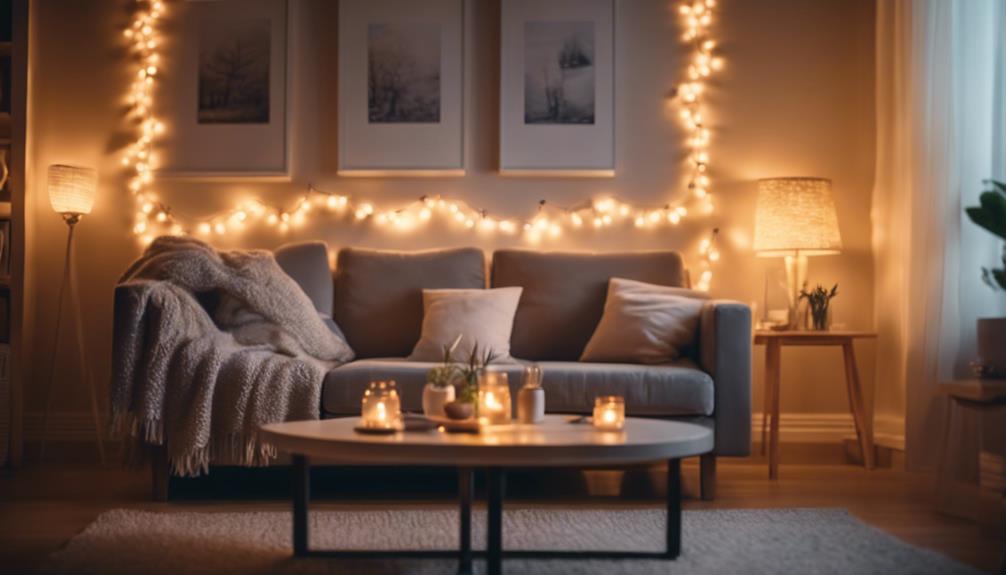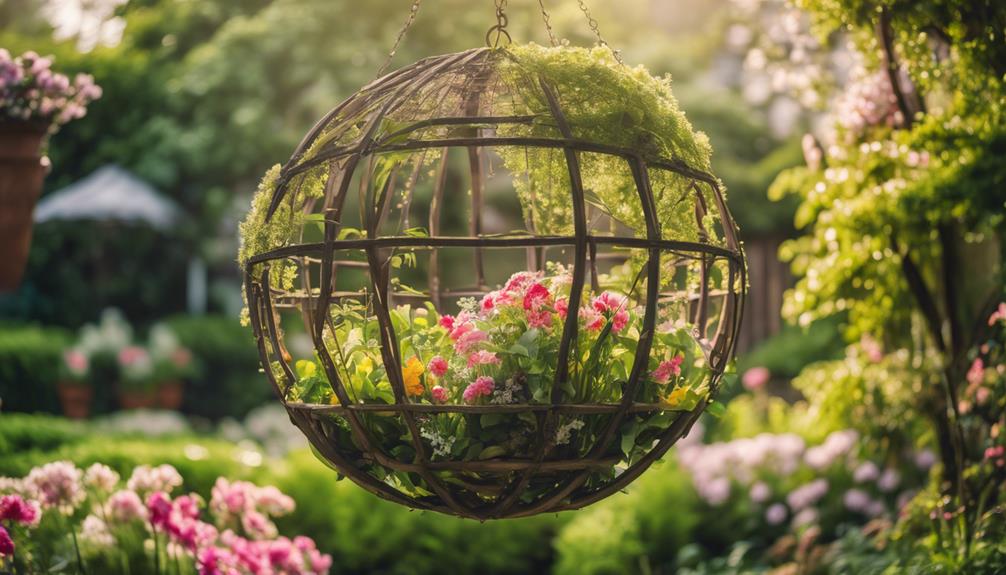When you explore urban and rural interior design styles, you'll notice how each offers a distinct feel. Urban design combines modern materials with open spaces, creating a sleek, vibrant environment. You'll find neutral palettes highlighted by striking accents. In contrast, rural design embraces natural elements, warm tones, and a cozy atmosphere. It often features vintage pieces that evoke nostalgia. Urban focuses on efficiency and tech, while rural invites you to unwind and connect with nature. Each style brings its own charm. As you continue, you'll uncover more about how these two worlds can blend beautifully for your space.
Key Takeaways
- Urban design features open spaces and industrial materials, while rural design emphasizes cozy atmospheres with natural elements like wood and stone.
- Color palettes differ significantly; urban interiors favor neutral tones and monochromatic designs, whereas rural spaces utilize warm, earthy colors for comfort.
- Urban interiors often include high-tech innovations and minimalist decor, while rural designs prioritize vintage pieces and traditional craftsmanship for authenticity.
- Functionality varies; urban designs maximize space with multi-functional furniture, while rural designs focus on oversized furnishings for a relaxed feel.
- Blending styles can create unique spaces that harmonize modern sophistication with cozy charm, bridging urban chic and rural warmth through statement decor.
Urban Interior Design Features
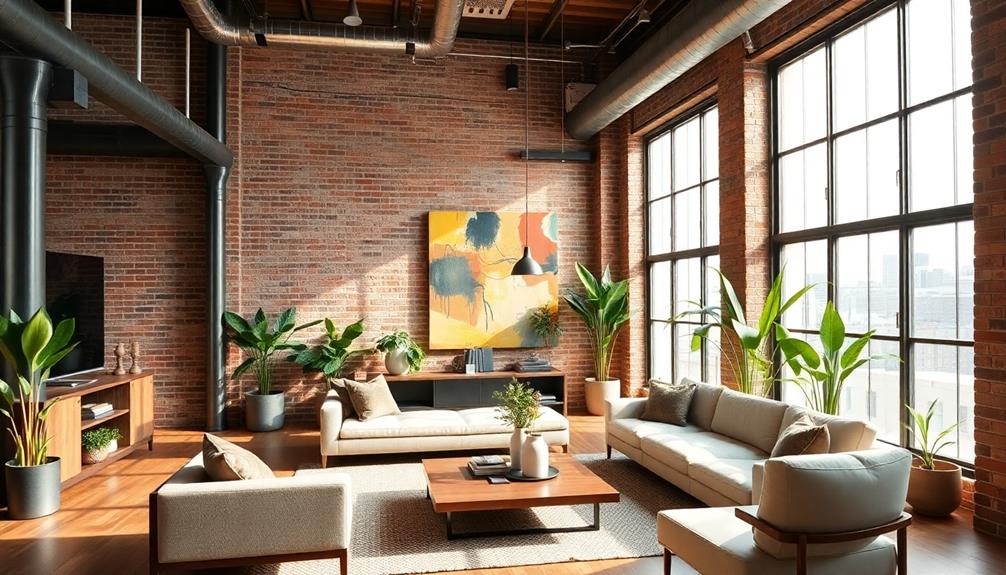
When you think about urban interior design, it's clear that it blends contemporary, modern, and industrial elements to create inviting spaces perfect for city living. This style emphasizes open spaces that foster a sense of freedom and light, making even the smallest apartments feel more expansive.
By opting for a neutral color palette, you create a calming backdrop while allowing for pops of color through statement pieces. Incorporating Indonesian decorative pillows can introduce vibrant colors and intricate patterns, enhancing the overall aesthetic of the space.
Comfortable furnishings crafted from natural materials add warmth and coziness to your urban oasis. Think plush sofas in soft fabrics alongside sleek, minimalist design tables with clean lines. These choices not only enhance comfort but also maintain the elegance of modern design.
Textured elements like patterned rugs or large artworks can serve as focal points, adding depth without overwhelming your space. The integration of industrial style, seen in exposed brick or metal accents, further enhances the urban aesthetic.
Rural Interior Design Characteristics
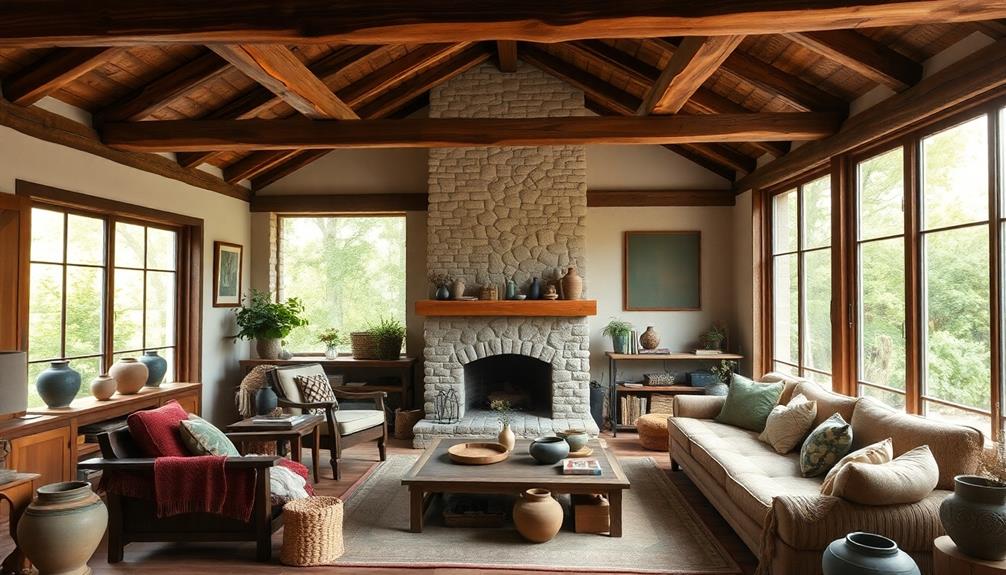
Rural interior design creates a cozy and relaxed atmosphere that invites you to unwind and connect with nature. This style emphasizes warm tones and earth tones, utilizing natural materials like wood and stone that celebrate the beauty of the outdoors. With sustainability in mind, you'll find reclaimed and locally sourced materials, minimizing environmental impact while enhancing your space's character.
Incorporating vintage pieces and traditional craftsmanship adds a rich history to your home. Elements such as rustic textures and nature-inspired decor reflect the surrounding landscape, creating a harmonious connection to the environment.
Here's a quick overview of rural interior design characteristics:
| Feature | Description | Benefit |
|---|---|---|
| Natural Materials | Wood, stone, and other organic materials | Brings nature indoors |
| Warm Color Palette | Earth tones and pastels | Creates a cozy ambiance |
| Vintage Furnishings | Handmade and reclaimed items | Adds charm and authenticity |
Comparing Aesthetic Philosophies
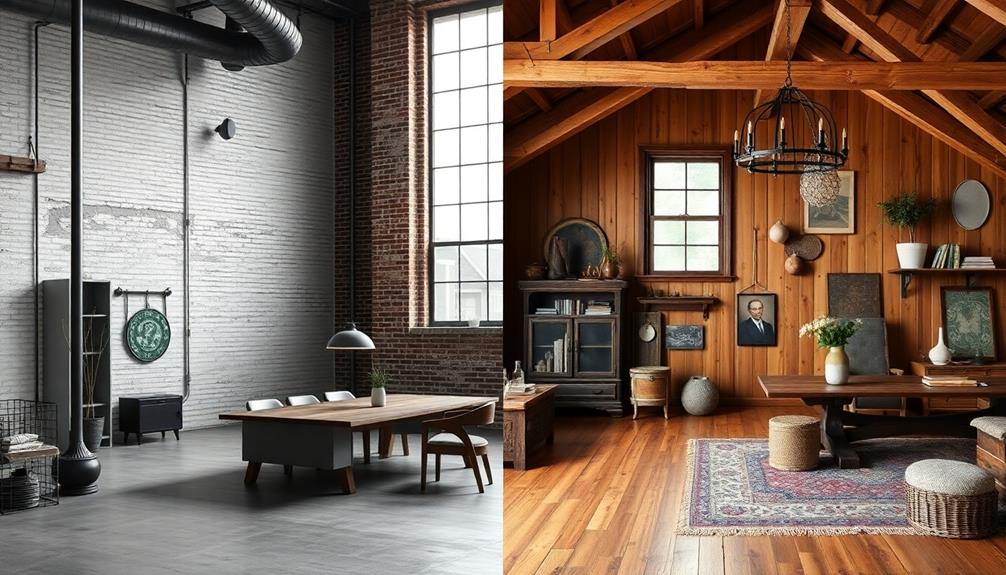
Understanding the differences between rural and urban interior design styles reveals distinct aesthetic philosophies that cater to varying lifestyles and preferences.
You'll notice that each approach employs unique design elements to create a specific mood. Urban spaces often incorporate elements like modern tropical architecture concepts that blend contemporary design with eco-friendly materials, while rural designs celebrate rustic charm through natural materials like wood and stone.
Here are three key contrasts:
- Modern Urban vs. Traditional Style: Urban interiors often showcase a minimalist space with sleek lines and industrial materials like exposed brick and metal accents, while rural designs celebrate rustic charm through natural materials like wood and stone.
- Color Palette: Urban spaces typically feature a monochromatic color palette, emphasizing functionality and sophistication. In contrast, rural home decor leans toward warm, soft colors that evoke comfort and coziness.
- Decor Approach: Urban design embraces high-tech innovations and statement pieces, reflecting a fast-paced lifestyle. Conversely, rural interiors focus on eclectic mixes of vintage and handmade items, showcasing personal expression and a connection to nature.
Functionality and Space Utilization
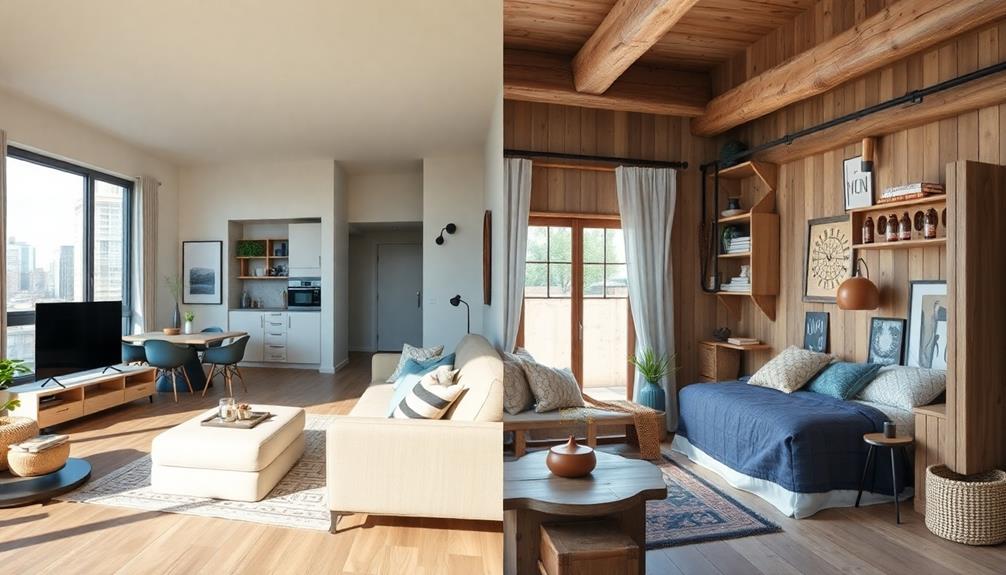
Maximizing space is essential in urban interior design, where every square foot counts. You'll find that functionality reigns supreme, with open floor plans and multi-functional furniture transforming cramped living areas into practical, stylish spaces.
Urban designs often incorporate vertical storage solutions, allowing you to utilize walls effectively while keeping the floor area clutter-free. Additionally, the influence of modern housing trends, such as eco-friendly designs, is becoming evident in urban interiors, with sustainable materials and smart technology enhancing both functionality and aesthetics.
In contrast, rural interior design emphasizes cozy environments, filled with oversized pieces that invite warmth and comfort. While urban spaces thrive on sleek, minimalistic furniture, rural homes embrace rustic charm, creating inviting areas for social interaction.
Natural light plays a vital role in both styles but manifests differently. Urban designs often feature large windows that flood smaller spaces with light, enhancing the feeling of openness.
In rural settings, strategically placed windows and open layouts maximize airflow and illumination across expansive areas.
Ultimately, your choice between urban and rural designs will depend on your lifestyle. If you prioritize functionality and efficient space utilization, urban interior design will serve you well.
However, if you seek a cozy, inviting atmosphere with room to breathe, rural design might be the perfect fit.
Blending Styles for Unique Spaces
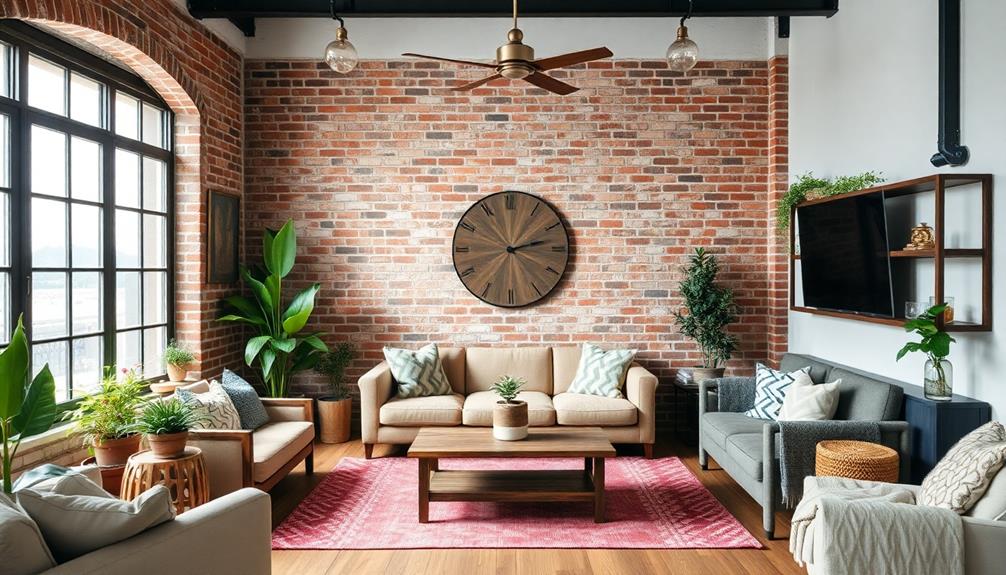
Blending urban and rural interior design styles creates a vibrant space that reflects your unique personality and lifestyle.
By merging modern sophistication with cozy charm, you can craft inviting areas that celebrate both environments. Incorporating elements from Balinese design characteristics, such as natural materials and cultural motifs, can further enhance the blend.
Here are three key ways to achieve this blend:
- Mix Materials: Combine industrial design's clean lines and sleek finishes with rustic materials like wood and stone. This fusion creates a balanced aesthetic that feels both contemporary and warm.
- Choose a Neutral Palette: Utilize earthy tones to harmonize contrasting styles. A neutral color scheme enhances the overall design, making your spaces often feel cohesive and welcoming.
- Incorporate Statement Decor: Use statement pieces, such as vintage furniture or artisanal decor elements, to serve as focal points. These unique style choices bridge urban chic and rural warmth, enriching your space's narrative.
Frequently Asked Questions
What Is the Urban Style of Interior Design?
Urban interior design combines contemporary and industrial elements, emphasizing minimalism and functionality. You'll notice sleek furniture, open spaces, and neutral palettes, often accented by nature-inspired touches and statement pieces that enhance the overall aesthetic.
What Interior Design Style Is Popular Right Now?
Right now, you'll find contemporary and minimalist styles leading the way in interior design. These trends emphasize clean lines, functional spaces, and smart technology, creating environments that reflect modern living and enhance your lifestyle.
What Is the Most Popular Interior Design Style in 2024?
In 2024, contemporary design's your best bet. You'll love its clean lines and minimalism, perfect for stylish, functional spaces. Urban elegance and industrial chic also shine, combining sophistication with modern convenience for an exciting aesthetic.
How to Decide Interior Design Style?
To decide your interior design style, start by exploring personal preferences. Take quizzes, browse inspiration, and consider your lifestyle needs. Focus on colors and materials that resonate with you for a cohesive vision.
Conclusion
As you navigate the dynamic worlds of urban and rural interior design, you might find yourself at a crossroads. Which style resonates more with your personal aesthetic? Urban chic offers sleek sophistication, while rural charm invites warmth and coziness. But what if you could merge the two, creating a space that's uniquely yours? The possibilities are endless, and the journey is just beginning. Are you ready to transform your home into a reflection of your own story?
